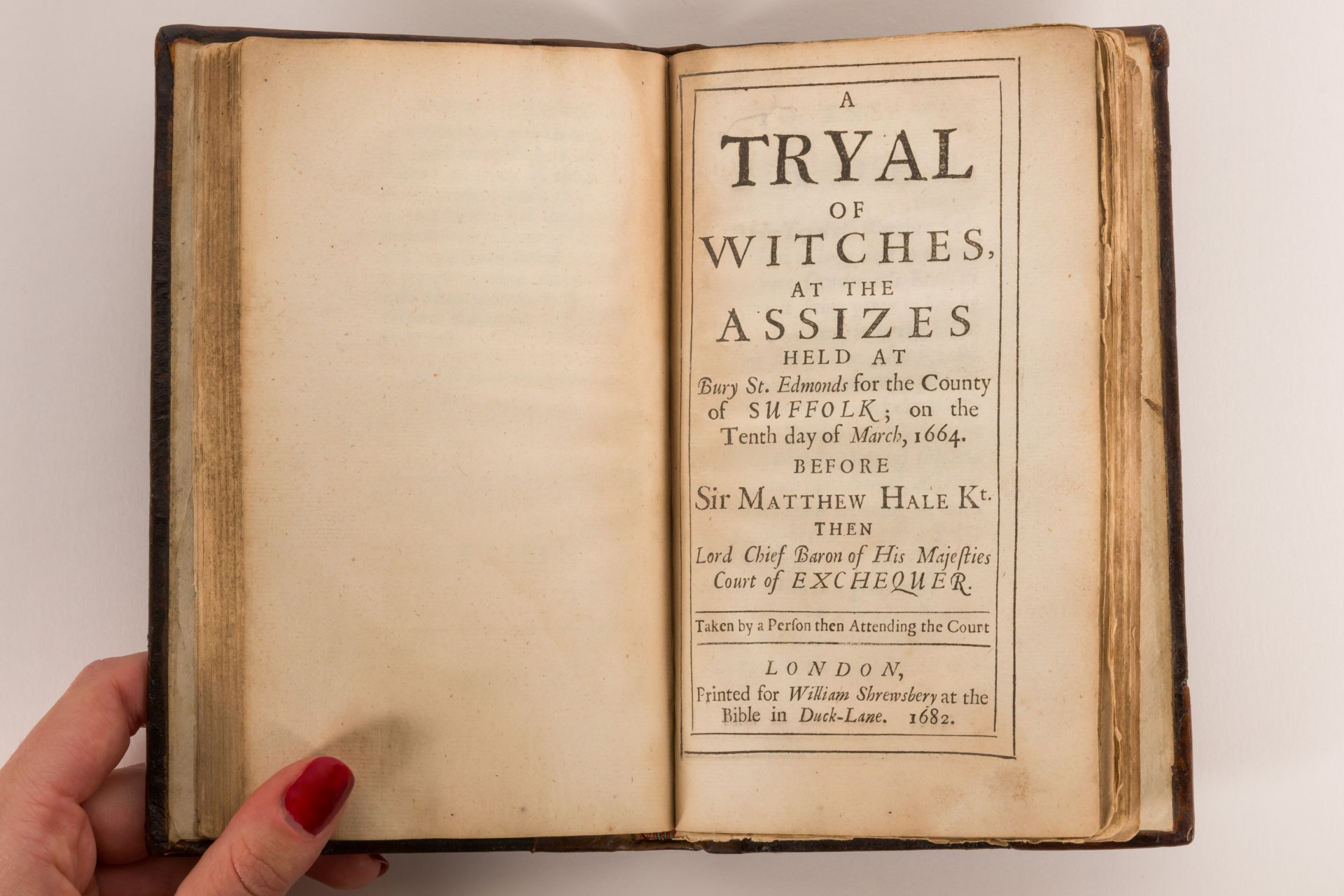

A rare eyewitness account of the trial of two Suffolk women accused of witchcraft in the 17th century comes for sale at Chiswick Auctions on November 29. The case, presided over by the famous judge Sir Matthew Hale in March 1664, was one later used as the legal precedent for the Salem Witch Trials.
A Tryal of Witches at the Assizes Held at Bury St. Edmunds for the County of Suffolk was printed in London in 1682, the year Hale died. However, it deals with the trial of Rose Cullender and Amy Duny (or Denny) conducted 18 years earlier.

Witchcraft. [Hale (Mathew)] A Tryal of Witches, at the Assizes...1682
Estimate £3,000 - £4,000
The widows, from Lowestoft, had been accused of witchcraft by their neighbours and faced 13 charges of bewitching several young children – the youngest only a few months old and the eldest 18 – one of whom had died.
Cullender was a member of a property-owning family and Duny the widow of a labourer. Their ‘victims’ were the two daughters and the aunt of a local merchant, Samuel Pacy.
Tried at the assizes under the 1603 Witchcraft Act, they were found guilty on all 13 charges of using malevolent witchcraft and sentenced to be hanged. Sir Matthew Hale believed wholeheartedly in the menace of witches and used the hearsay evidence of children and the ‘spectral’ evidence of visions and dreams to secure convictions.
The book records Hale’s instructions to jurors at Bury St Edmunds. He asked them consider only “first, whether or no these children were bewitched, [and] secondly, whether the prisoners at bar were guilty of it” and stated that the question of whether witchcraft is real was not under discussion, since its existence was recognised in the Bible and by Parliament.
His opinions were studied by the judges of New England during the famous witch trials held in colonial Massachusetts between early 1692 and mid-1693 when more than 200 people from Salem were accused of practicing witchcraft and 20 were executed.
In Great Britain, witch hunts were at their most intense during the Puritan era. From the 15th until the early 18th century, perhaps 500 people were executed for witchcraft, 90 percent of them women.